See this Estonian Banksy exhibition through a queer lens in 6 stunning artworks
Tallinn’s unauthorised exhibition showcases how Banksy has been influenced by the LGBTQ+ community, Attitude's travel editor Markus Bidaux discovers
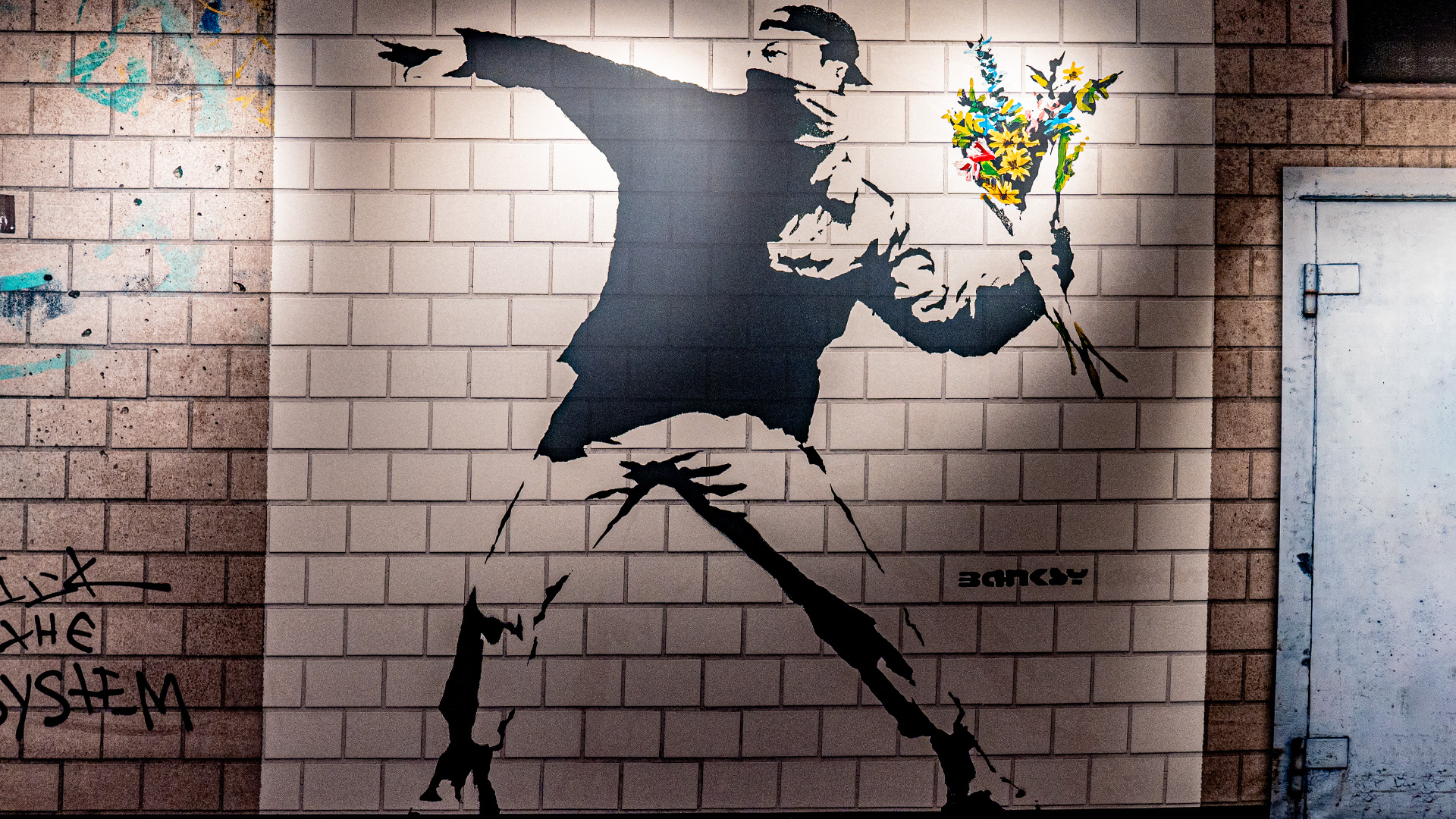
Elusive artist Banksy has been all over the news recently with his menagerie of animal artworks appearing around London.
Never wanting to be ones to miss out on a trend, Attitude visited The Mystery of Banksy – A Genius Mind unauthorised exhibition in Estonia‘s capital city of Tallinn, to see how queer culture has influenced the ever-popular artist.
The exhibition can be found in the Tallinn’s Telliskivi Creative City, which is aptly located in a former industrial complex with plenty of graffiti amongst various galleries, shops, restaurants and bars.
The exhibition features over 200 facsimiles of his iconic works, including a huge pink elephant statue representing the time in 2006 he painted a 37-year-old Indian elephant in Los Angeles, to match the wallpaper of his art show.
Below, we’ve shared six artworks that showcase the queer side of Banksy’s expansive body of work.
Queen Vic
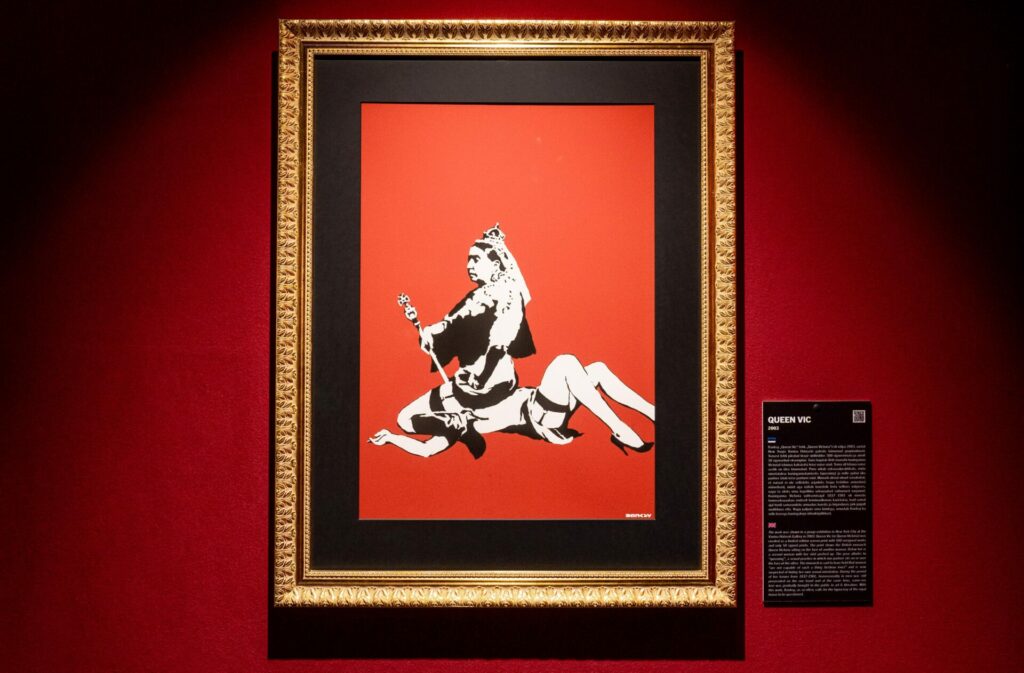
Banksy’s Queen Vic was created as a series of 550 prints for a show in New York City in 2003.
It depicts Queen Victoria sitting on the face of another woman.
The sexual act of a woman sitting on another persons face is appropriately termed “queening”.
The queen, who reigned from 1837-1901, is alleged to have said women are not capable of lesbian love.
Kissing Coppers
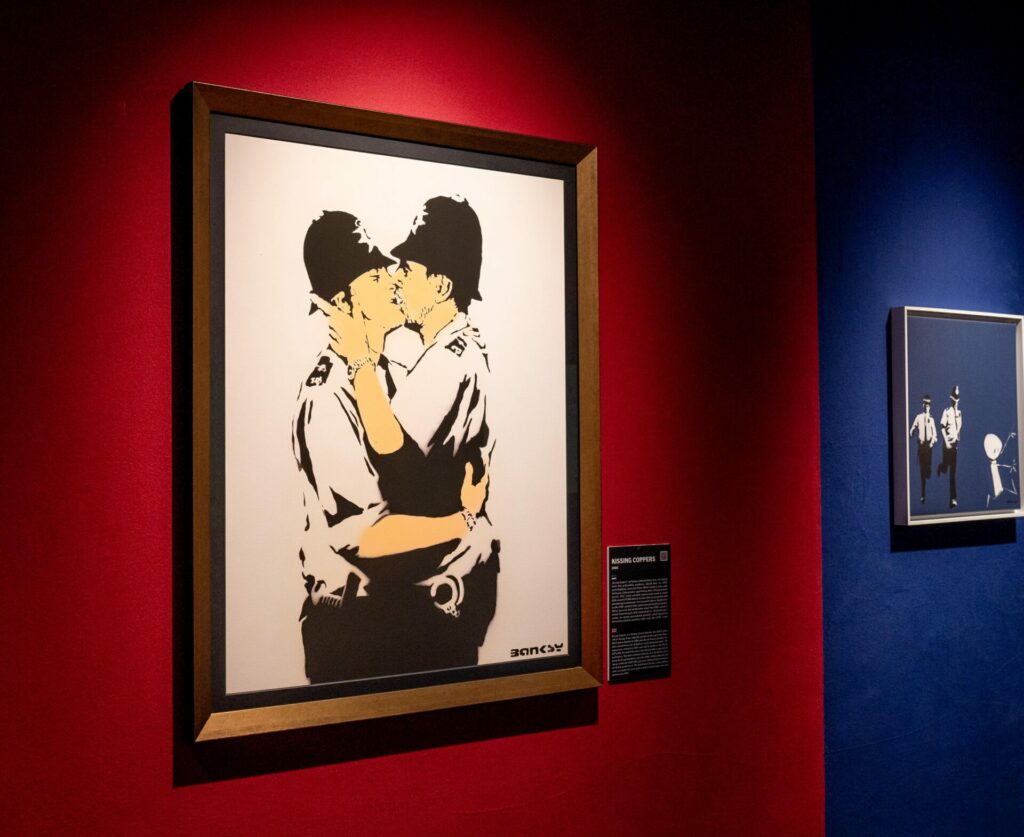
Kissing Coppers, featuring two male police officers embraced in a kiss, is considered one of Banksy’s most iconic works.
The original piece was stencilled on to the side of the Prince Albert pub in Brighton in 2004.
It was removed in 2011 and sold at auction in the US for $575,000.
The work celebrates Brighton being a gay-friendly city.
Kate Moss
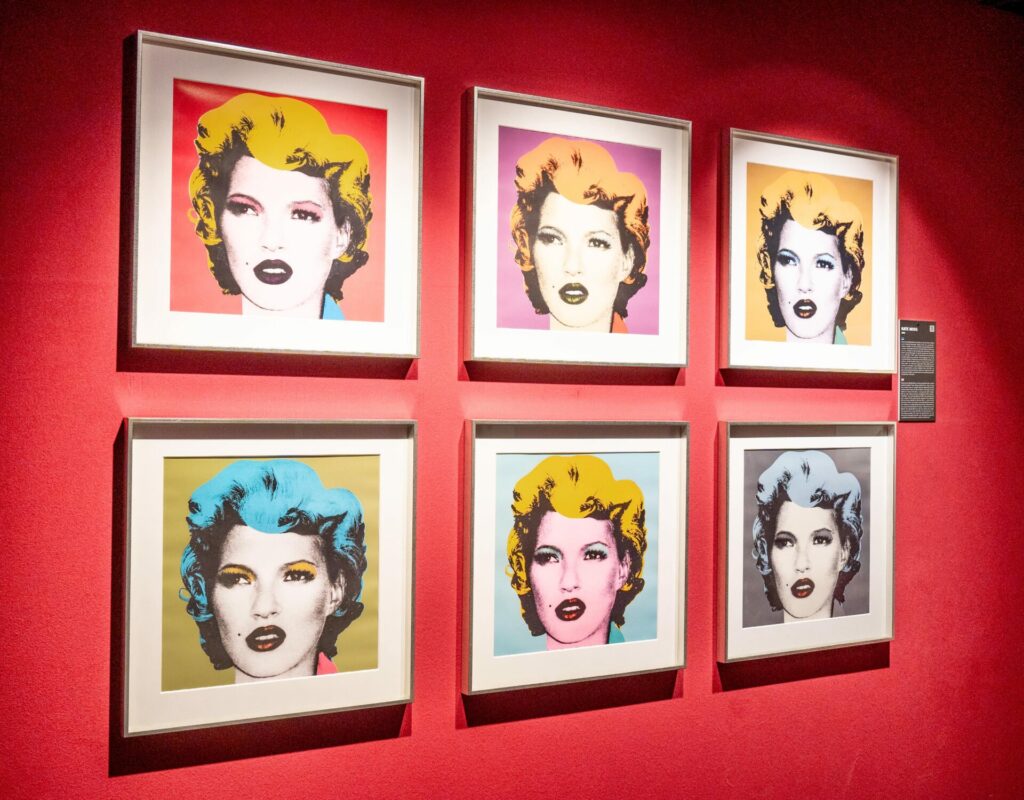
Kate Moss is Banksy’s 2005 reworking of gay artist Andy Warhol’s Marilyn Monroe screen prints with the iconic British wild child supermodel.
Banksy didn’t stop there and also reproduced Warhol’s Campbell’s Soup Cans, replacing Campbell’s with Tesco Value soup cans mocking the consumerism that Warhol adored.
Banksquiat
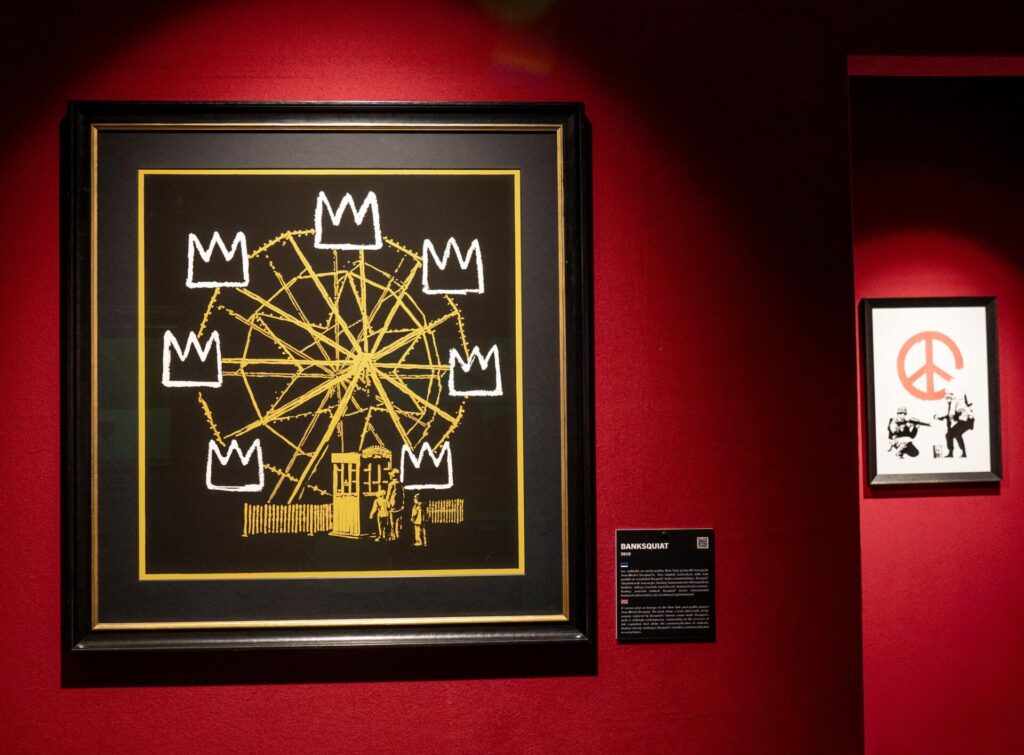
Bisexual New York artist Jean-Paul Basquiat is homaged in Banksy’s Banksquiat 2019 print.
Banksquiat depicts a ferris wheel with the cars replaced by Basquiant’s iconic crown motif.
The print symbolises the endless wheel of consumerism in which masterpieces are reproduced on T-shirts or reworked for advertising campaigns.
Choose Your Weapon
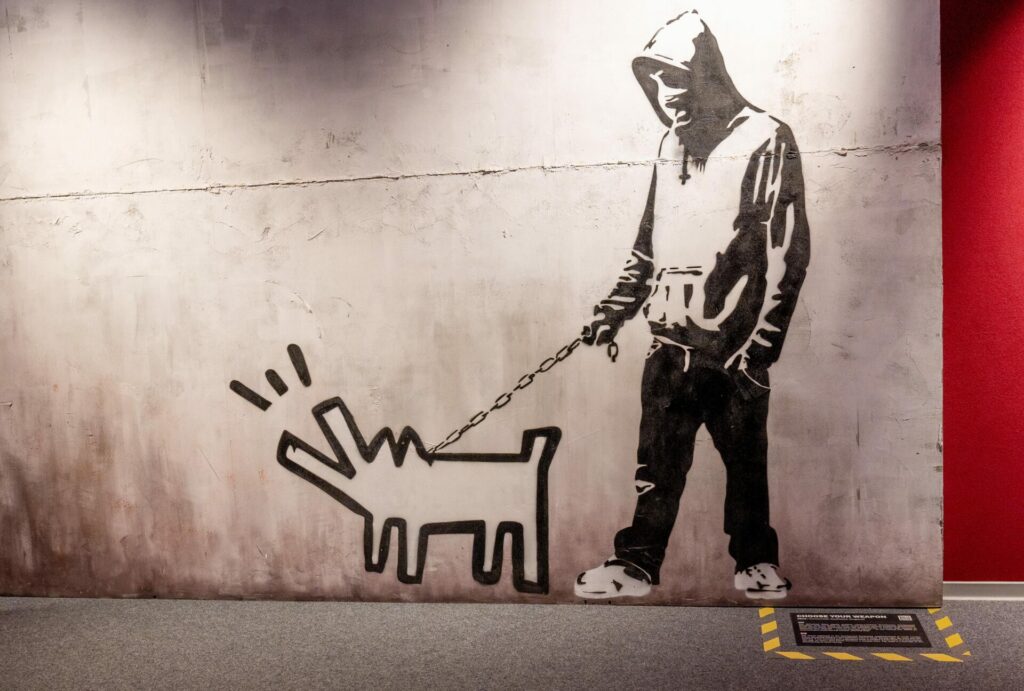
Banksy’s 2010 mural originally found in the Camberwell Southwark neighbourhood in south London pays homage to the gay artist Keith Haring‘s Barking Dog.
Here, Banksy uses Haring’s Barking Dog to show that the pen can be mightier than the sword.
Suicide Bomber
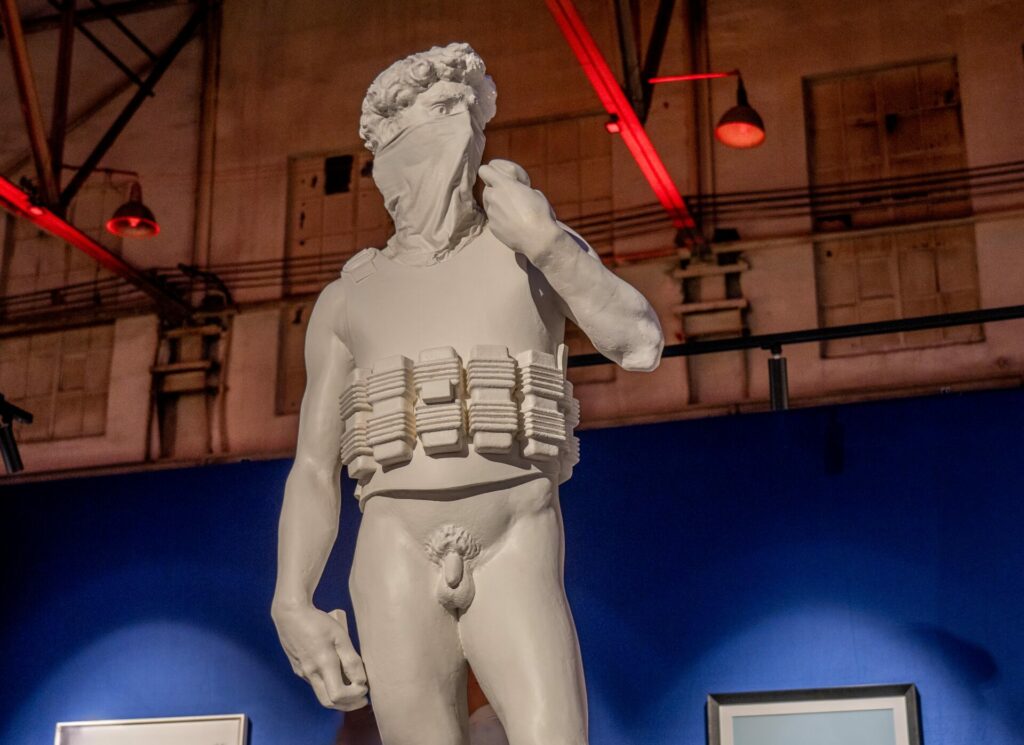
Banksy’s Suicide Bomber was a highlight of his Banksy vs Bristol Museum show in 2009.
Depicting Michelangelo’s David with an explosive vest and a cloth in front of his face, it is one of Banksy’s many pieces which questions the glorification of war.
Many historians believe that the 16th century artist Michelangelo was gay.
Create Escape
Sadly, a reproduction of Banksy’s 2021 Create Escape mural on Reading Gaol Prison in Berkshire, England never made the exhibition in Tallinn.
We feel it is worth mentioning this piece as it is on the side of a prison made most famous for incarnating Oscar Wilde and which inspired his poem The Ballad of Reading Gaol, written in exile after his release.
Banksy’s prisoner is stencilled escaping down a long sheet of paper-turned-rope with a typewriter at the end.
Banksy’s hope was to help to stop the prison from being demolished and instead turned into an arts centre.
